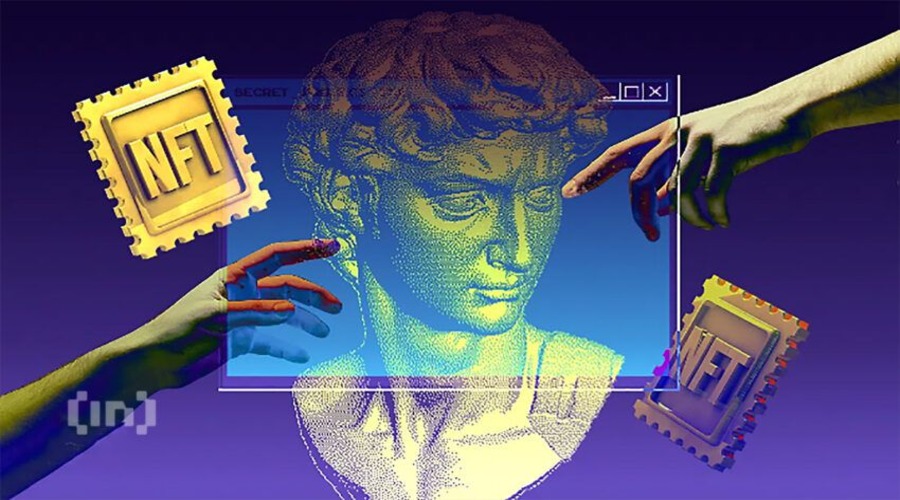In recent years, the world has witnessed a surge in the popularity of Non-Fungible Tokens (NFTs), revolutionizing the concept of digital ownership. NFTs have opened up a whole new realm of possibilities, allowing creators to tokenize and sell unique digital assets. From digital art to virtual real estate, NFTs have expanded into various categories of collectibles, captivating the attention of artists, collectors, and enthusiasts worldwide. In this blog post, we will embark on a journey to explore the different types of NFT collectibles, understanding their characteristics, exploring their popularity, and delving into the unique experiences they offer.
The Rise of NFT Collectibles
The rise of NFT collectibles has been a prominent trend within the broader NFT market. Collectibles, whether digital or physical, have always held a special place in the hearts of enthusiasts and collectors. NFTs have provided a new avenue for creating and collecting digital collectibles, and the market has witnessed significant growth and enthusiasm in this area.
NFTs have introduced a paradigm shift in the digital landscape, transforming the way we perceive and value digital assets. Unlike cryptocurrencies such as Bitcoin or Ethereum, which are fungible and interchangeable, NFTs represent unique items or pieces of digital content. Each NFT possesses distinct attributes, metadata, and a provable history of ownership. This cryptographic tokenization, coupled with the transparency and security provided by blockchain technology, has given rise to a burgeoning market for NFT collectibles.
NFT collectibles can take various forms, including virtual trading cards, in-game items, virtual pets, and more. These digital assets possess unique characteristics, such as limited editions, special features, or rare attributes, making them highly sought after by collectors. The concept of scarcity, proven ownership, and the ability to showcase digital collectibles in virtual worlds or online galleries have added to their appeal.
Digital Art NFTs: Masterpieces in the Digital Realm
One of the most prominent categories of NFT collectibles is digital art. NFTs have provided a platform for artists to showcase their creativity, enabling them to monetize their digital artwork directly. Digital art NFTs offer a means for artists to connect with collectors on a global scale, eliminating the need for traditional art galleries and intermediaries. Collectors can now own a piece of digital art that is not only unique but also comes with additional perks and benefits.
Digital Art NFTs have ushered in a new era of creativity and artistic expression within the digital realm. With the advent of blockchain technology, artists now have the means to tokenize their digital artworks as Non-Fungible Tokens (NFTs), revolutionizing the art market and challenging traditional notions of ownership and value.
Digital Art NFTs represent a paradigm shift, allowing artists to create, sell, and authenticate their digital masterpieces with transparency and immutability. These NFTs provide provable scarcity, provenance, and ownership on the blockchain, assuring collectors of the authenticity and uniqueness of the artwork they acquire.
Platforms such as SuperRare, Rarible, and Foundation have emerged as marketplaces for digital art NFTs, connecting artists and collectors in a decentralized manner. Artists can mint their creations as NFTs, allowing collectors to bid, purchase, and trade these digital masterpieces. Additionally, the blockchain provides an immutable record of ownership, ensuring the authenticity and provenance of the artwork.
Virtual Real Estate: Building Dreams in the Metaverse
Another fascinating category of NFT collectibles is virtual real estate. With the emergence of virtual worlds and metaverses, NFTs have enabled the ownership and trading of virtual land parcels. These virtual plots of land serve as the foundation for immersive digital experiences, where users can build, create, and interact with others in a virtual environment.
Platforms like Decentraland, The Sandbox, and Somnium Space have pioneered the concept of virtual real estate NFTs. Users can purchase and own virtual land, customize their virtual properties, and even monetize their creations. Virtual real estate NFTs offer a unique opportunity for individuals and businesses to establish a presence in the metaverse, tapping into the growing trend of virtual social interactions and virtual economies.
Virtual real estate has emerged as a fascinating and dynamic concept within the realm of the metaverse. As technology continues to advance, virtual worlds are becoming more immersive and expansive, offering individuals the opportunity to own and develop virtual properties that mirror real-world real estate.
In the metaverse, virtual real estate represents digital parcels of land, properties, or virtual spaces that users can purchase, trade, and build upon. These virtual properties exist within online platforms or virtual worlds, providing a canvas for creativity, social interaction, and even economic opportunities.

Collectible Cards and Sports Memorabilia: Nostalgia in the Digital Age
NFTs have also breathed new life into the world of collectible cards and sports memorabilia. Traditionally, collectors would seek physical trading cards or sports-related items as a way to showcase their passion and nostalgia. However, NFTs have opened up a digital avenue for collecting and trading these items.
Digital collectible platforms like NBA Top Shot and Sorare have gained significant traction in the market. NBA Top Shot allows fans to collect digital basketball highlights in the form of NFTs, reliving iconic moments and showcasing their collection to the world. Similarly, Sorare offers NFT-based collectible cards representing football players, allowing users to build teams and compete in fantasy football leagues.
Music and Virtual Concert NFTs: Harmonizing the Digital Experience
The music industry has also embraced the concept of NFT collectibles, providing artists with new avenues to engage with fans and monetize their music. Musicians can release limited-edition albums, concert tickets, or backstage passes as NFTs, offering unique experiences to their most dedicated supporters.
Virtual concerts, enabled by advancements in technology and streaming platforms, have gained popularity as a way to deliver immersive music experiences to a global audience. With the addition of NFTs, these virtual concerts become even more unique and valuable. Artists can now create limited edition NFTs that provide exclusive access to virtual performances, backstage content, and even personalized interactions with fans.
Music NFTs offer several benefits for both artists and fans. For artists, NFTs provide a new revenue stream by allowing them to sell digital collectibles directly to their audience. These collectibles can range from exclusive music releases to virtual concert tickets. By leveraging blockchain technology, artists can ensure authenticity and traceability of their digital creations, offering fans a sense of ownership and rarity.
Fans, on the other hand, get the opportunity to own a piece of their favorite artist’s journey. They can participate in auctions or purchase NFTs representing memorable moments from virtual concerts. These NFTs can be traded or displayed in digital art galleries, showcasing their support for the artist and their love for music.
Platforms like Nifty Gateway and Audius have become popular destinations for music-related NFTs. Nifty Gateway allows artists to mint and sell digital music artworks and albums as NFTs, giving fans the opportunity to own exclusive digital music collectibles. Audius, on the other hand, is a decentralized music streaming platform that enables artists to release their music and sell NFTs representing rights and ownership shares in their songs.
Gaming and Virtual Goods: Unlocking New Dimensions
The gaming industry has always been at the forefront of innovation, and NFTs have brought a new dimension to the gaming experience. NFTs have enabled the ownership and trading of in-game assets, creating a thriving market for virtual goods.
Blockchain-based gaming platforms like Axie Infinity and CryptoKitties have revolutionized the concept of virtual item ownership. Axie Infinity allows players to collect, breed, and battle digital creatures known as Axies, with each Axie represented as an NFT. CryptoKitties, on the other hand, introduced the world to the concept of collectible digital cats, where users can breed and trade unique virtual feline companions.
Conclusion
The world of NFT collectibles is a vibrant and ever-evolving landscape, where artists, creators, collectors, and enthusiasts come together in a decentralized ecosystem. From digital art to virtual real estate, collectible cards to music and gaming, NFTs have opened up new avenues for ownership, creativity, and engagement. As the NFT space continues to grow and innovate, it presents a world of endless possibilities for individuals to explore, express themselves, and connect with others in the digital realm.
FAQs
- Are NFTs only digital assets? While NFTs are primarily associated with digital assets, the concept of tokenizing real-world assets is also gaining traction. Physical assets such as real estate, luxury goods, and even intellectual property can be tokenized as NFTs, enabling fractional ownership and increased liquidity.
- How do I buy and sell NFTs? Buying and selling NFTs typically requires the use of a digital wallet and participation in NFT marketplaces. Users can connect their digital wallets to compatible platforms, browse available NFTs, and make purchases using cryptocurrency.
- What is the future of NFT collectibles? The future of NFT collectibles is full of exciting possibilities. As technology advances, we can expect to see more integration of NFTs into various industries, the emergence of new creative expressions, and innovative use cases that harness the power of blockchain and decentralized systems.
- Are NFTs a good investment? Investing in NFTs comes with risks, as with any investment. It is important to research and understand the market dynamics, the reputation of the creators, and the demand for the specific NFTs before making investment decisions.
- How can I create my own NFT? To create your own NFT, you can utilize NFT marketplaces that provide minting services. These platforms allow you to upload your digital assets, define the attributes and metadata, and mint them as NFTs for sale or auction.
I’m a highly experienced and well-respected author in the field of cryptocurrency. I have been involved in the industry for over 5 years and have written extensively on the topic, both for academic and general audiences. I’m highly sought-after as a speaker and consultant on cryptocurrency, due to my in-depth knowledge and understanding of the industry. I’m also a regular contributor to leading industry publications.

